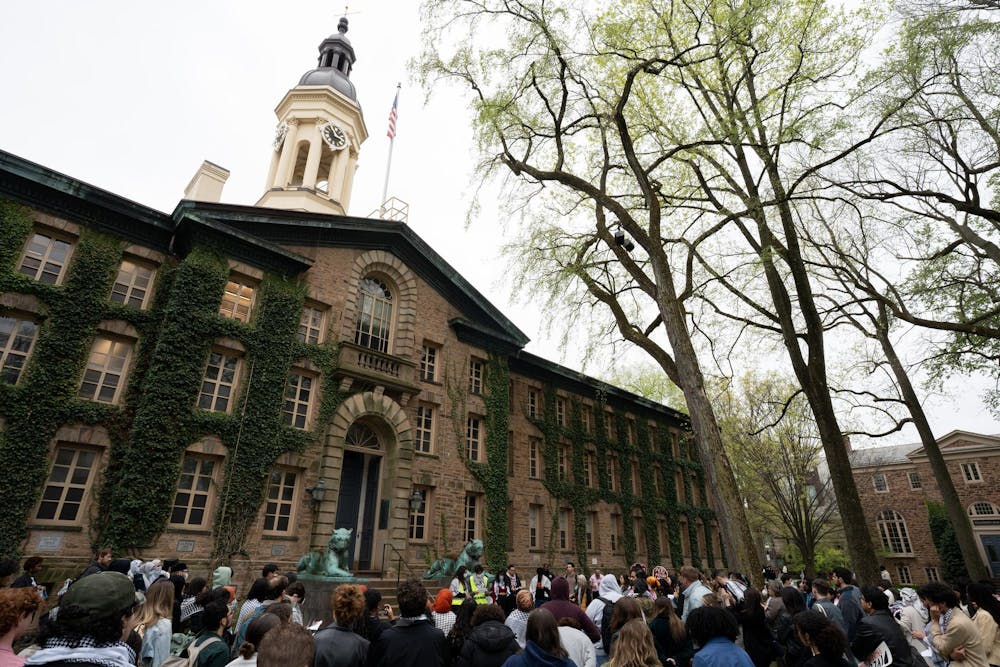While I am only a first-year photographer for The Daily Princetonian, I have already taken dozens of photos of Nassau Hall. Frequently I have passed by a print copy of the ‘Prince’ or opened the app only to be greeted by one of my own stock photos above an Opinion column or a News article. Indeed, the building has become a stand-in for a photo of the school administration, or more abstract events such as an antisemitism investigation, the admission of the Class of 2028, or even the recent earthquake that struck campus. These stock photos can be used as a visual shorthand for Princeton as a whole, including the school’s reputation of existing within an “Orange Bubble” that separates campus from the “real world.” By this logic, if nothing worth photographing ever happens on campus, another photo of Nassau Hall will do.
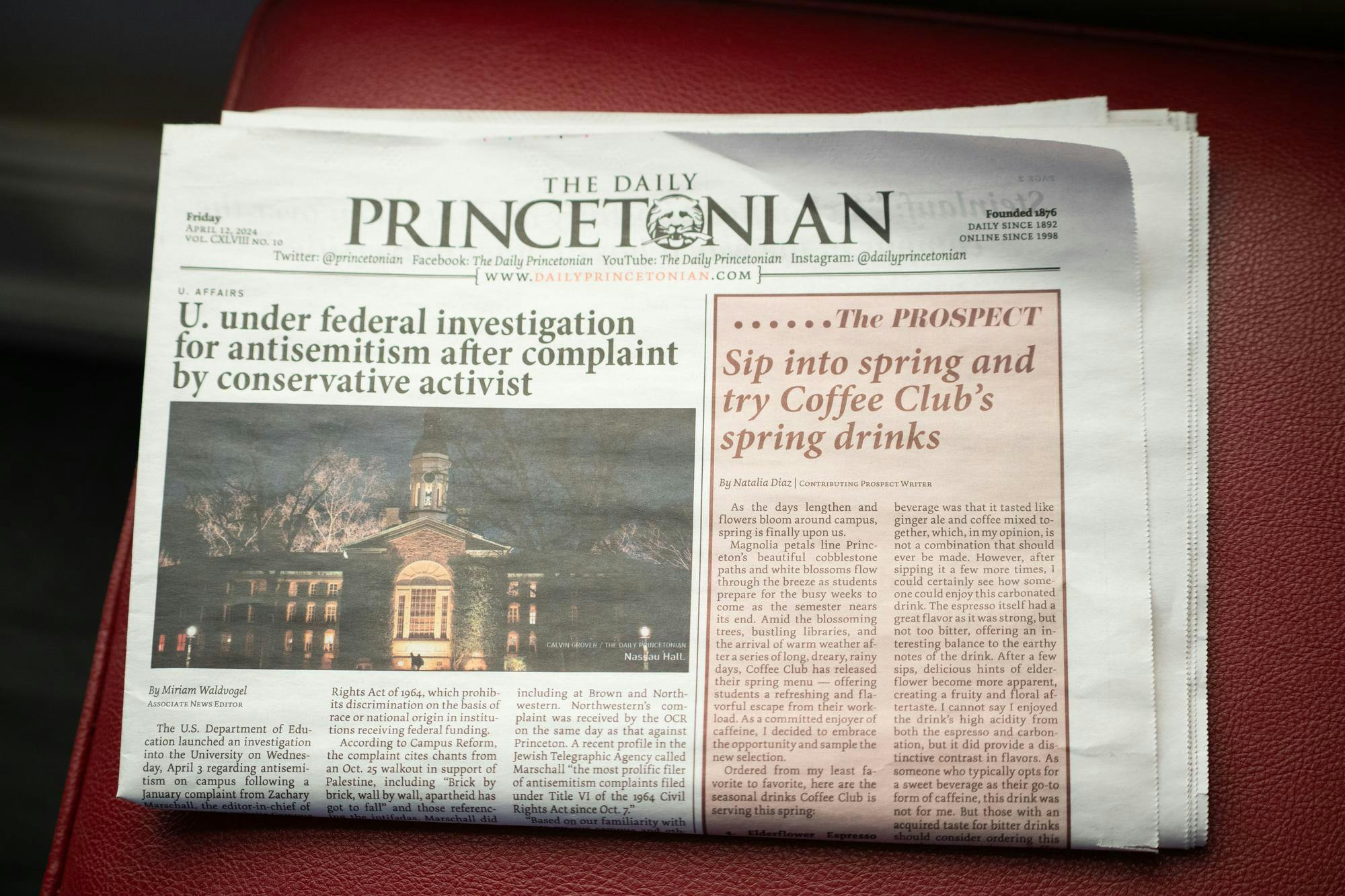
A print copy of the ‘Prince’ featuring a stock photo of Nassau Hall.
Calvin Grover / The Daily Princetonian
In addition to the ubiquitous stock photos, I frequently take photographs of demonstrations happening on campus. These demonstrations typically take place in front of Nassau Hall, with chants and signs addressed directly to school administration, whose offices lie within. At this point, I have photographed so many events there that it is no exaggeration to say that I know exactly what to expect, where to stand, and where the light will fall at any time of day.
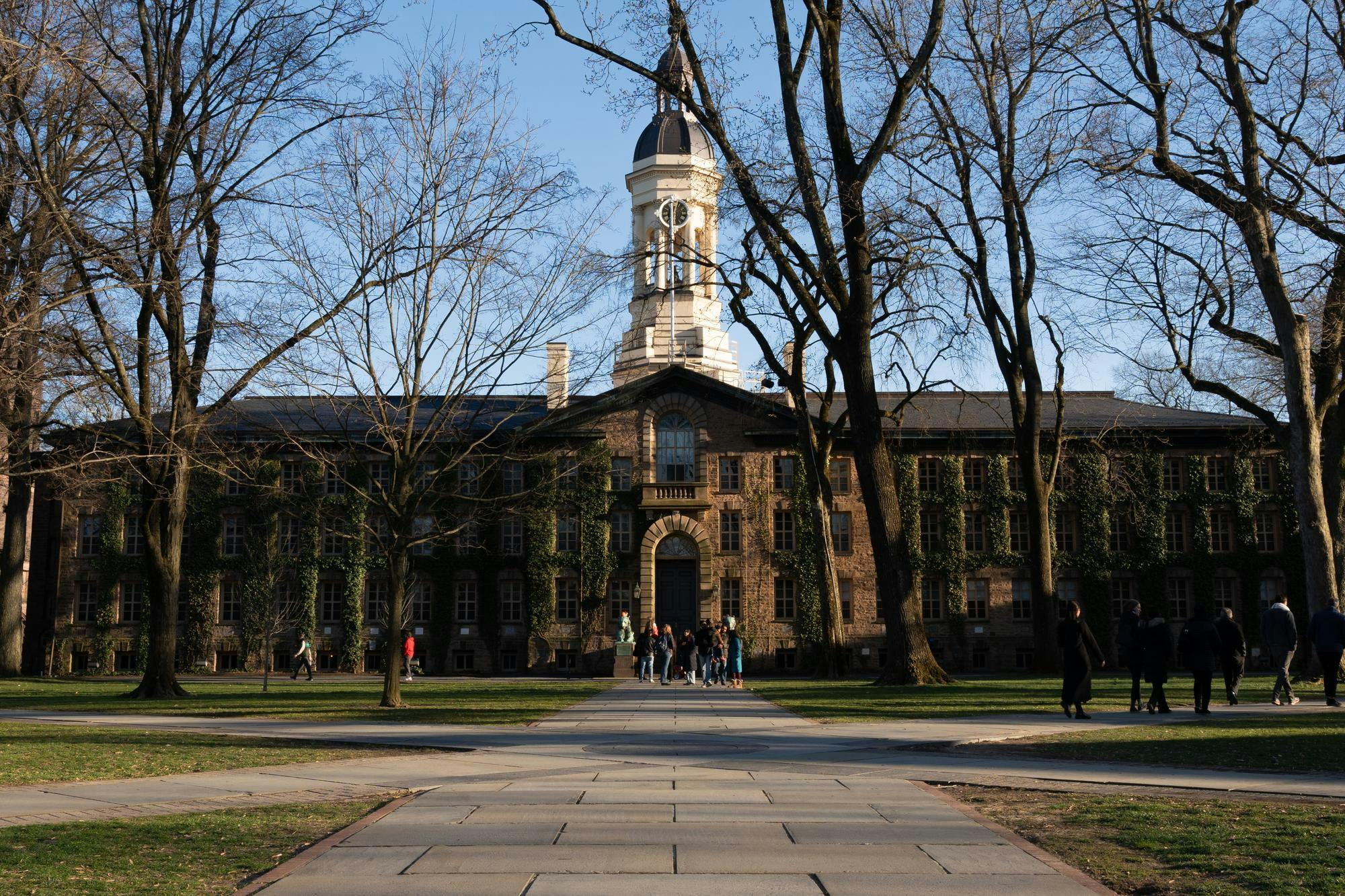
Nassau Hall.
Calvin Grover / The Daily Princetonian
Nassau Hall has also been closely tied to the major issues of the nation since its construction in 1756. As any tour guide can tell you, the walls withstood cannonballs during the Battle of Princeton, and the building even served as the provisional capital of the United States during the end of the Revolutionary War. However, what is less likely to be discussed on admitted students’ days is the tradition of activism associated with the building, such as the 2015 Black Justice League sit-in of Nassau Hall that demanded a reckoning with the school’s deeply racist past, the 1995 takeover that demanded the creation of ethnic studies and a more diverse faculty, and several occupations, blockades, and encampments related to divestment from the South African Apartheid. By staging events outside of Nassau Hall, student organizers knowingly enter into dialogue with these past movements and historical moments.
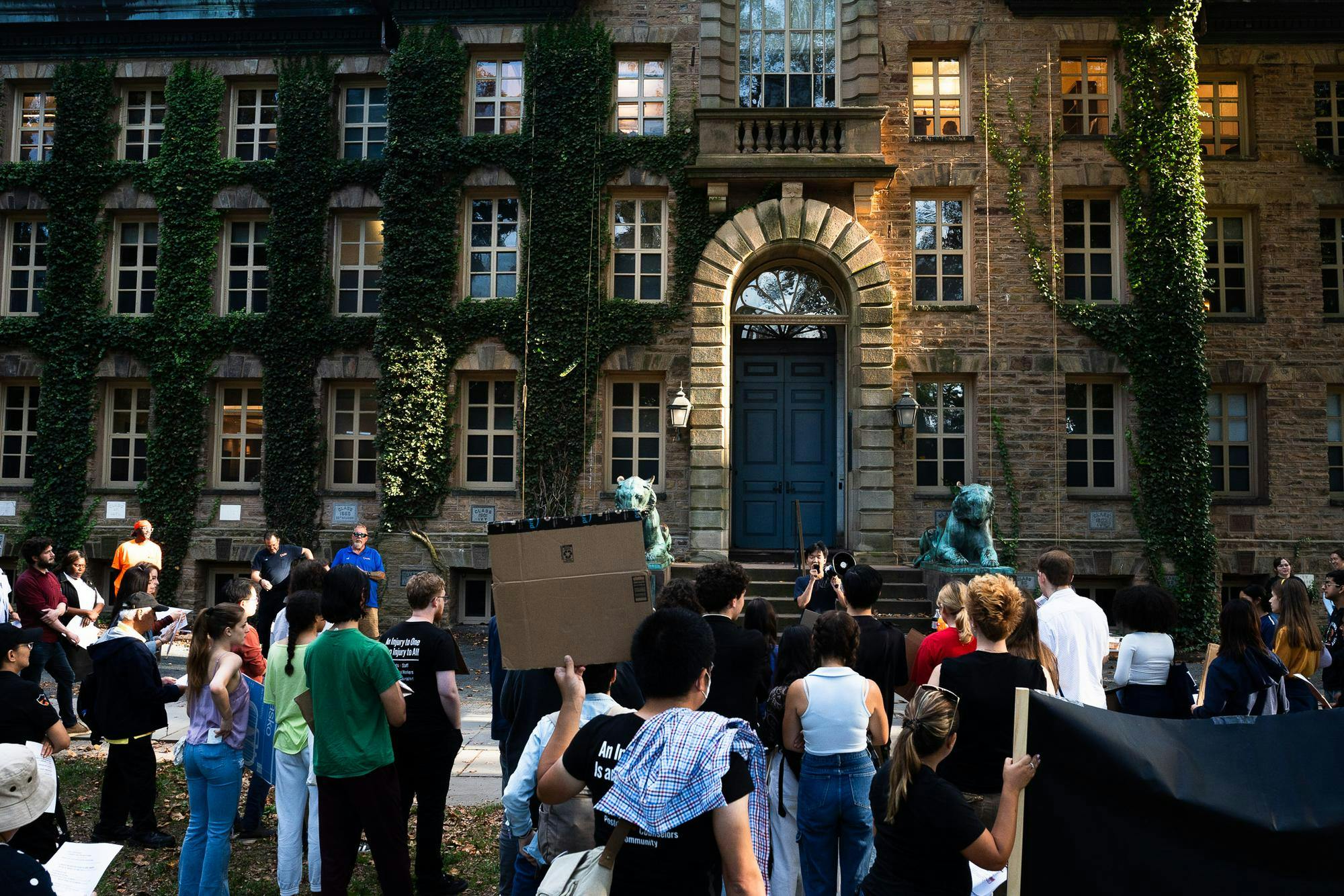
Lake Liao ’27 gives a speech at a YDSA-organized worker’s town hall on September 21, 2023
Calvin Grover / The Daily Princetonian
Indeed, the site continues to be relevant to the Princeton community as a focal point for more contemporary issues that reach beyond the Orange Bubble such as the national resurgence of the labor movement. After the summer break, students, workers, and labor organizers held a rally in front of Nassau Hall — the first collaborative labor action on campus of the 2023–2024 academic year.
“There’s a flurry of labor activity [around Princeton]. It’s really energizing and really good to see. And obviously it's connected to the broader labor movement that we see in the nation, in the country.” Abby Leibowitz ’26 said, the electoral coordinator of the Princeton Young Democratic Socialists of America (YDSA).

Leibowitz is a senior News writer for the ‘Prince.’

Jeff Coley, president of SEIU Local 175 gives a speech at a YDSA-organized worker’s town hall on September 21, 2023.
Calvin Grover / The Daily Princetonian
This symbol — so entrenched in our idea of Princeton — is also one of the spots where the campus dialogue escapes the bubble and reaches into the broader Princeton community.
“[Princeton is] the belly of the monster, as one can say — there’s so much wealth and power and privilege here, and yet there’s still employees who are not able to afford housing anywhere nearby by working multiple jobs,” Leibowitz added. “I think as students, it’s important to leverage our power to just show that we value them.”

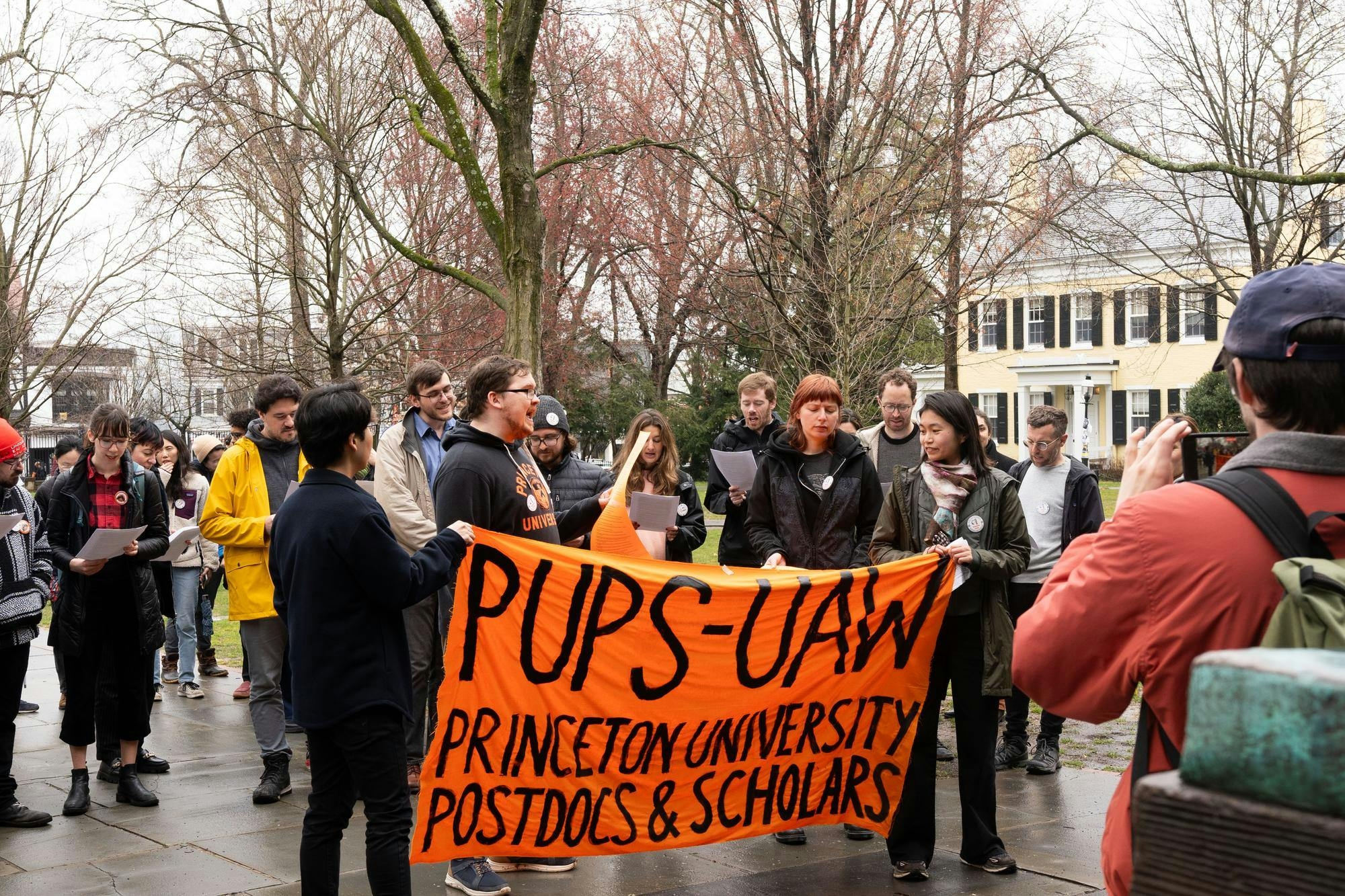
PUPS members read an open letter at a demonstration in front of Nassau Hall on April 1, in anticipation of filing for an election with the NLRB.
Calvin Grover / The Daily Princetonian
Princeton University Postdocs and Scholars (PUPS) recently organized a demonstration in which organizers marched from the north lawn of Frist Student Center to Nassau Hall in order to deliver an open letter to the university administration.
Though the discourse may take place at Nassau Hall, the labor issues seen on Princeton’s campus discourse are not unique to the Orange Bubble.
“Our postdoc unionization effort is part of a much larger movement in higher ed,” Jessica Ng, a member of the PUPS Organizing Committee, told the ‘Prince.’ “The vulnerability of academic workers — graduate students, postdocs, even faculty — has been exposed, so we’re realizing that we have to work together and organize ourselves just to afford to live near our workplace and maybe even have a child in our thirties.”
PUPS is currently set to hold an election in early May.

A PSAFE officer patrols in front of an SJP-organized demonstration in front of Nassau Hall on Friday, April 19.
Calvin Grover / The Daily Princetonian
Organizers with Princeton Students for Justice in Palestine (SJP) also look beyond the limits of Princeton’s campus. On Friday, April 19, students protesting against the mass arrest of pro-Palestinian student organizers at Columbia assembled on the north side of Nassau Hall, while the Class of 2026 simultaneously celebrated Declaration Day just on the other side of the building, on Cannon Green. Later, the demonstration would move to the other side of Nassau Hall to interrupt the Declaration Day activities.
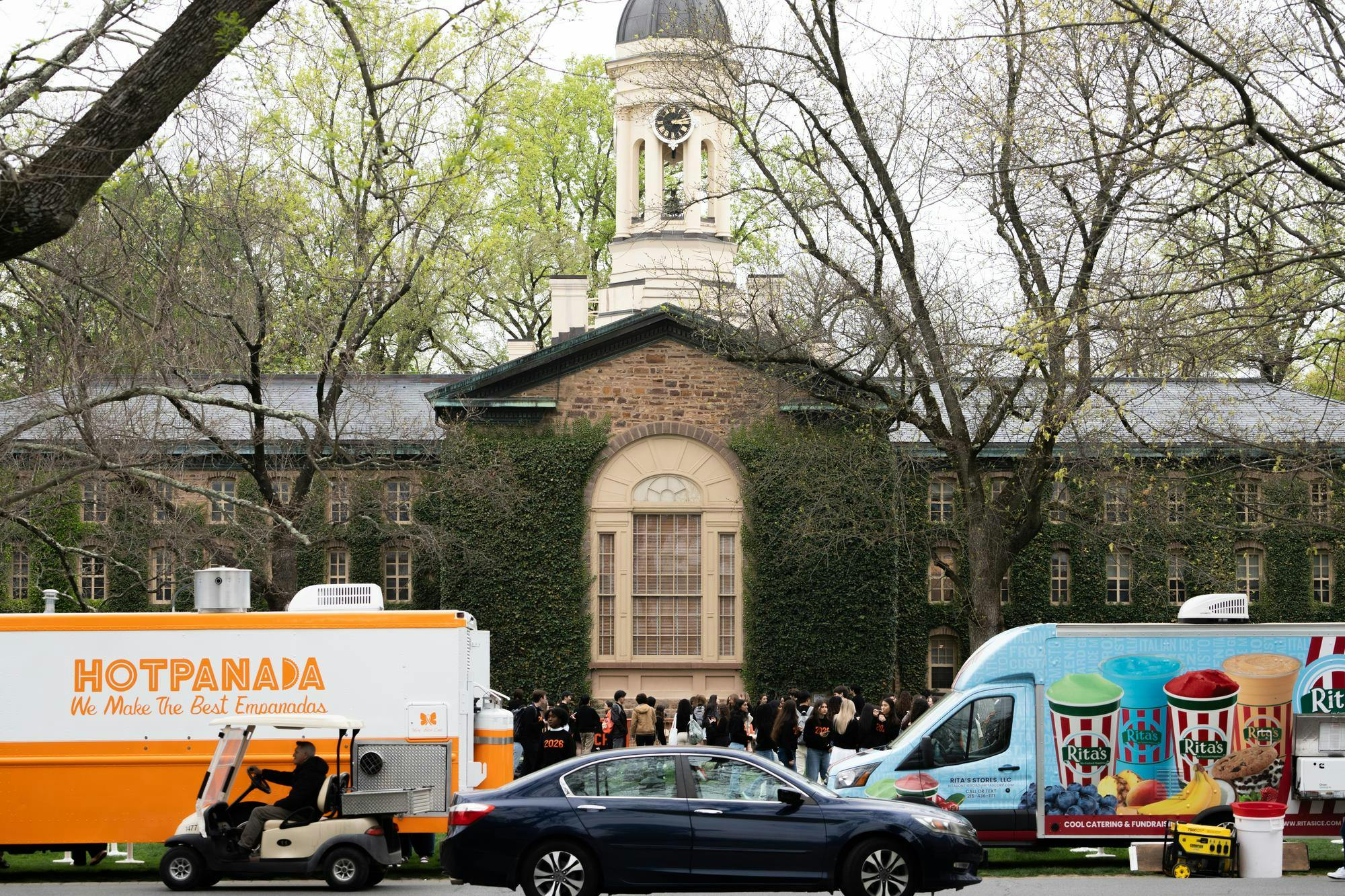
Food trucks parked on Cannon Green during Declaration Day celebrations at the same time as an SJP demonstration on April 19.
Calvin Grover / The Daily Princetonian
Nipuna Ginige ’26, the treasurer of Princeton SJP, led chants at the demonstration while wearing a white keffiyeh over his black and orange Declaration Day class sweater, with several other sophomores in the crowd doing the same. To me as a photographer, the visual contrast between the events on either side of the building was striking. While one crowd of students celebrated among colorful food trucks, the other protested the mass arrests of nonviolent pro-Palestinian student protesters in New York.
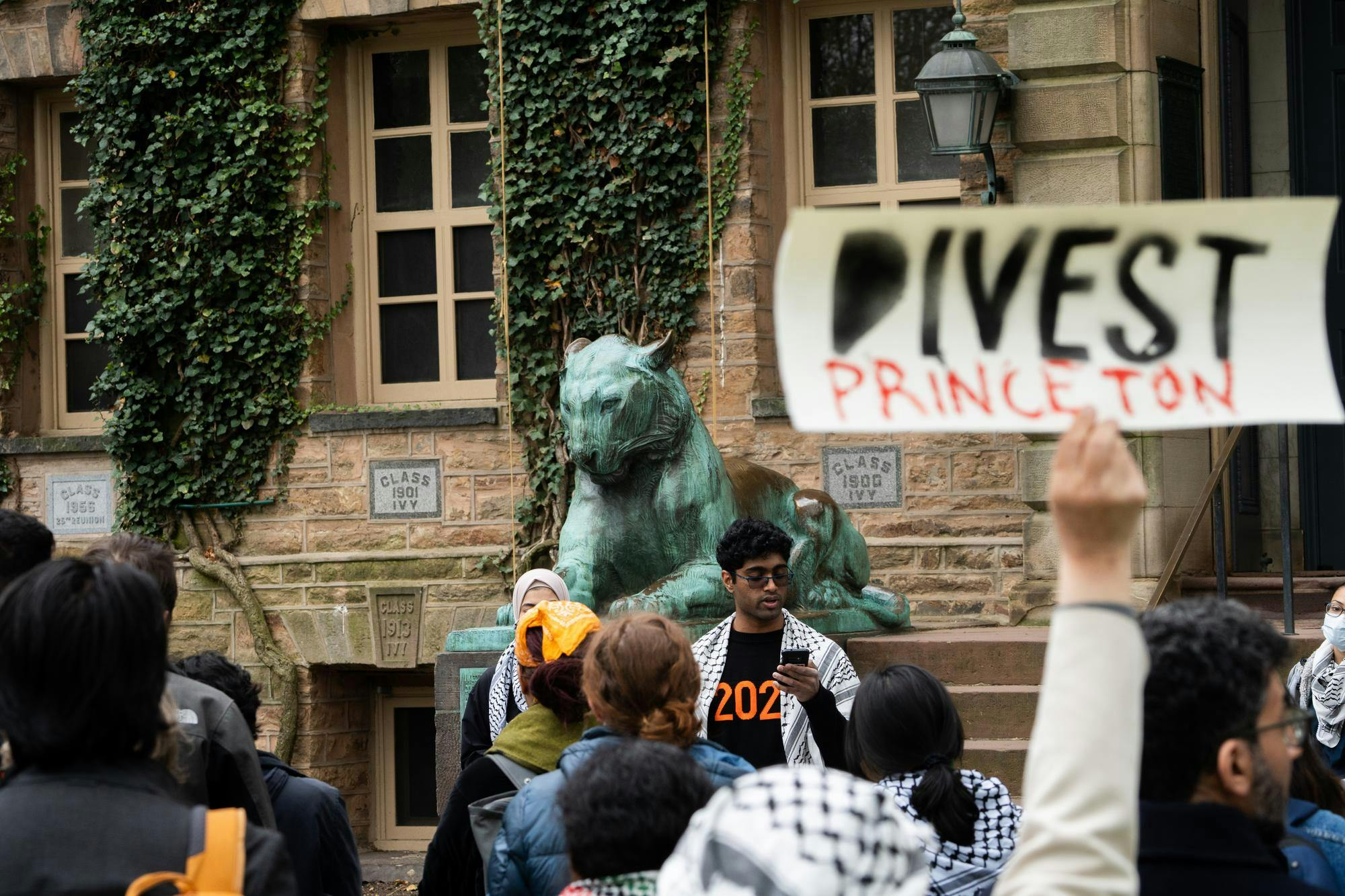
Ginige delivered a speech at an SJP-organized demonstration on April 19.
Calvin Grover / The Daily Princetonian
In an interview, Ginige additionally framed the pro-Palestine demonstration as a part of an international movement.
”There’s a huge history of student organizing and a huge lineage that’s horizontal, connecting us to all the other SJPs, all the other college students, and even outside of the United States,” Ginige said. Additionally, he placed the action within the context of historical movements whose protests also took place at Nassau Hall.
“Take a look at South African Apartheid. If you look at the Vietnam War, a big push for why the United States pulled out of those is because of college campuses.”
These protests contain a celebration of what the University is and can be, as well as a demand for it to be better. Demonstrations on campus may be visually similar to one another, but that is intentional. Speaking on contemporary issues from the steps of Nassau Hall is an echo of the past, reaching through history like the vines of ivy that crawl up the old walls.
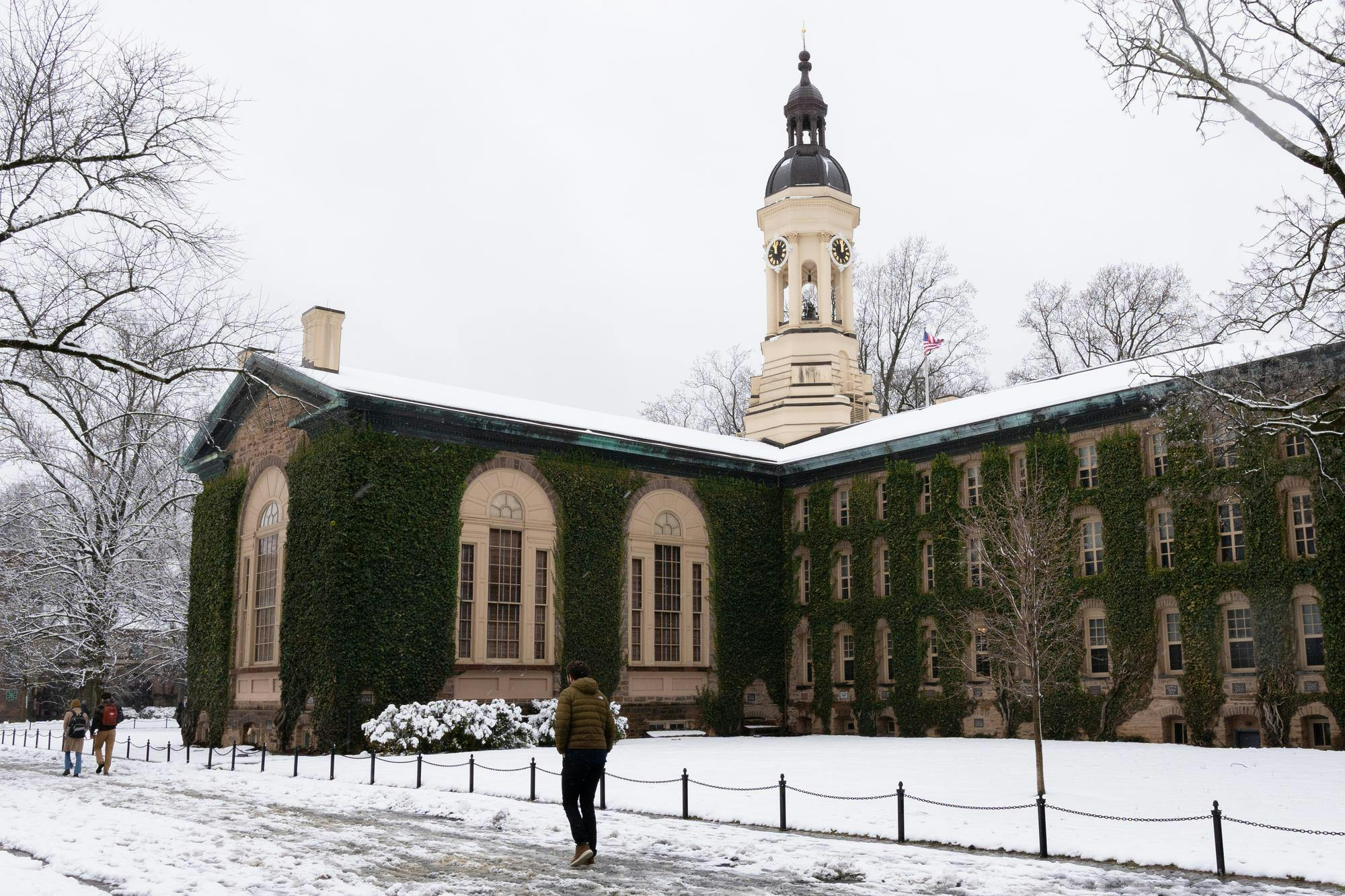
Nassau Hall covered in snow.
Calvin Grover / The Daily Princetonian
Nassau Hall is not only an ambiguous stock photo to represent anything Princeton related — it is also a shorthand for both the institutional history of Princeton and the hopes of its community for the future, a site of revolutionary ideas and reconciliation and where Princeton's 278-year history meets the present moment. So as long as things keep happening at Nassau Hall, I will keep showing up to take photos there.
Calvin Grover is an associate Photo editor for the ‘Prince.’
Please send any corrections to corrections[at]dailyprincetonian.com.





